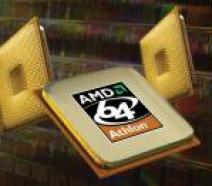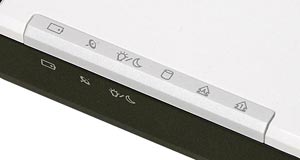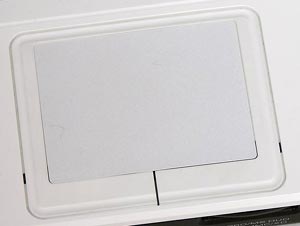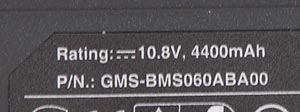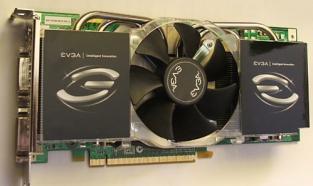MSI MEGABOOK S425 REVIEW NOTEBOOK PERFORMANCE BENCHMARK
![]()
|
|
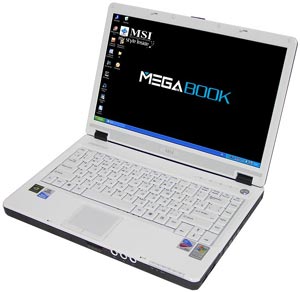 |
||||||||||||
| Posted:2006-06-09 By notebook review Number of View:202941 |
|||||||||||||
By :notebook review Posted:2006-06-09
MSI is a new player on the notebook market, but it has made great progress in a very short while. The company’s model range is now comparable to that of a long-established brand, it’s simpler to say what MSI does not offer. It doesn’t offer a sub-compact model with a screen diagonal of 10” or smaller and it doesn’t transformers – that’s about all. Other market niches have a model from MSI. The MegaBook S425 is a new notebook which perfectly meets the requirements of this review and is also one of the most originally designed models here. The developers seem to have taken all the existing design ideas and mixed them up to produce the following:
When opened, the S425 resembles LG’s T1 – the same pearl-white plastic is here, even around the screen. But when the notebook is closed, it doesn’t look at all like the LG with its black stylish coloring and reasonable minimalism in details:
I can put up with the red color of the lid, especially as there are other color schemes available, but the round insert in the center looks too obtrusive to me. It is also thick which doesn’t make it look any better:
The same logotype looks more appropriate on the L7xx series of desktop replacement notebooks with a screen diagonal of 17” because the notebook itself is larger. Here, the logotype is too big. Well, you may like it if you are fond of visual effects – the letters MSI are highlighted. A characteristic feature of all notebooks from MSI is that they have audio connectors on the front panel:
hese are headphones, microphone and line-in sockets. Again, I don’t think it’s a proper place for them, but there must be some reason for the company’s engineers to place audio connectors on the front panel. Next to them, a card-reader is located:
The S425 is the second notebook in this review that supports xD in addition to the standard selection of card formats. The notebook status indicators are designed as icons on a matte strip:
Some of them have copies on the front panel so that you could figure everything out when the lid is closed. It’s good to have support for both the new ExpressCard format and for old PCMCIA cards. The keyboard is nearly ideal:
Everything’s in its right place without any innovations like combining Insert and Delete in one button. The arrow keys are made properly, too:
Just press on the corresponding section of the strip to enable the corresponding function. That’s not the best implementation, I should say. It’s hard to tell if the button has really been pressed or not. The Power-On button is highlighted just like on other MSI notebooks, this time with a blue circle around it. The touchpad’s buttons are as unhandy as the additional functional keys:
They are part of the touchpad bezel and are made of some rubber-like material, too. I didn’t like using them, to tell you the truth. The touchpad itself is good and large enough, with a normal positioning accuracy. The notebook sports two extra stickers:
One sticker indicates a discrete graphics adapter, NVIDIA GeForce Go 6200 TC. The choice is strange because this core is below the average level as mobile graphics go, and it is TC, too! I don’t think this adapter is any better than an integrated graphics core – you can’t play new 3D games normally on either. The second sticker reports that the S425 is equipped with a new-generation HD audio codec and supports such technologies as Dolby Headphones, Dolby Virtual Speaker, Dolby Pro Logic II, and Dolby Digital Live. I guess a mobile user may only be interested in Dolby Headphones mode among all of this. The rest is virtually useless due to obvious reasons. Even putting the problem of speakers aside, the new HD Audio is inferior even to entry-level hi-fi equipment in quality. You shouldn’t expect much from it whereas stereo mode without any virtualization should be enough for decent headphones. The display has good viewing angles, a now-fashionable glass matrix, high maximum brightness, and a good color reproduction and matrix response time. The backlighting isn’t uniform, but that’s not very conspicuous. All in all, the MSI S425 has one of the best displays among the notebooks tested in this review. The battery isn’t the biggest in this test…
…but its parameters are not worse than the other batteries’.
You will find this mouse among the notebook’s accessories…
…and a napkin to clean the display. A funny thing about this display: on the cloth between the screen and keyboard which I at first regarded as an ordinary detail of packaging for the purpose of transportation there was a text like “always put this material in to avoid the keyboard scratching the screen when you close the lid.” Instead of just making the keyboard a bit sunken in (the MSI S425 is not the thinnest notebook in this review, by the way), they ask you to put some damping material on it! :) PerformanceFirst I checked the notebooks in Business Winstone 2004 and Content Creation Winstone 2004 benchmarks MSI MegaBook S425 winstone benchmarkAnd here are the results produced by PCMark04: MSI MegaBook S425 pcmark performanceThe results of the Photoshop CS are indicative of the overall performance of the CPU, platform and hard drive: MSI MegaBook S425 adobe photoshopThe well-balanced LW40 is almost as fast as the two notebooks on the new platform. Other notebooks are slower. The two slowest models shouldn’t be used to run such applications at all – they are only capable of performing office tasks like processing text and spreadsheets, browsing the Web, etc. The next test shows what you can expect from these notebooks in gaming applications: MSI MegaBook S425 gaming benchmarkperformed this test using the maximum display resolution of each notebook, except for the LG T1 (I used 1280x800 with it because 1440x900 would have been too much for its integrated graphics core). The Acer TravelMate 3222WXMi is the best and can cope with modern games if you don’t use the highest graphics quality settings. Among other notebooks, only models with the X600 are interesting. The Samsung X11 is second after the TravelMate 3222WXMi but I doubt it’s going to be that fast in real games. I also published the results of the CPU subtest to show you that 3DMark03 favors the Centrino Core Duo platform. This is indicated by the Samsung X11’s results. This platform is the most promising one when it comes to games, considering that all the leading game developers have confirmed support for dual-core processors in their upcoming products. And now, the results of the most important test: I put the results the notebooks achieved in Reader’s mode and under maximum load into one diagram because the difference between the two is indicative of how well the manufacturer set up the power-saving parameters. The Sony VGN-FJ1SR looks best here as it yields you its full computing power under max load but is very economical in Reader’s mode. Besides the Sony, there are two more leaders: LG’s T1 with a high-capacity battery and an L series Core Duo processor which features low power consumption, and ASUS W3H00V. The latter proved to be a bit of a cheater, though. Even under max load with the portable/laptop power management scheme selected this notebook never increased its CPU frequency higher than 1.3GHz. It’s all clear with the first two diagrams, but then there are some things I’d want to single out. The LW40 is very fast in the memory test; it’s the best Centrino-based notebook I’ve seen in this benchmark. The Acer TravelMate 3222WXMi is unrivalled in the graphics subsystem test just because it has the fastest graphics adapter among the tested notebooks. Nvidia’s GeForce Go 7400 is downright disappointing. If you need fast graphics, buy a notebook that has dedicated graphics memory. Graphics subsystems of other kind (with such suffixes as TC, HM) are not much better than integrated graphics and cannot ensure high performance in 3D. In the disk subsystem test the notebooks rank up according to the spindle rotation speed of the hard drive they use. Other related notebook: Acer TravelMate 3222WXMi notebook review
we would be happy to answer for your question . if you have suggestion or comment
regarding this review our support would be glad to help just join our forum and ask u will get the best answer
to discuss check our forum section :-) RATE THIS REVIEW | |||||||||||||
![]()

MSI MegaBook S425 review notebook performance benchmark
MSI MegaBook S425 review notebook performance benchmark


7600gt review
7600gt is the middle card range.
We already benchmarked this video card and found that ...

 geforce 8800gtx and 8800gts
geforce 8800gtx and 8800gts  Xtreview software download Section
Xtreview software download Section  AMD TURION 64 X2 REVIEW
AMD TURION 64 X2 REVIEW  INTEL PENTIUM D 920 , INTEL PENTIUM D 930
INTEL PENTIUM D 920 , INTEL PENTIUM D 930  6800XT REVIEW
6800XT REVIEW  computer hardware REVIEW
computer hardware REVIEW  INTEL CONROE CORE DUO 2 REVIEW VS AMD AM2
INTEL CONROE CORE DUO 2 REVIEW VS AMD AM2  INTEL PENTIUM D 805 INTEL D805
INTEL PENTIUM D 805 INTEL D805  Free desktop wallpaper
Free desktop wallpaper  online fighting game
online fighting game  Xtreview price comparison center
Xtreview price comparison center 

- The new version of GPU-Z finally kills the belief in the miracle of Vega transformation
- The motherboard manufacturer confirms the characteristics of the processors Coffee Lake
- We are looking for copper coolers on NVIDIA Volta computing accelerators
- Unofficially about Intels plans to release 300-series chipset
- The Japanese representation of AMD offered monetary compensation to the first buyers of Ryzen Threadripper
- This year will not be released more than 45 million motherboards
- TSMC denies the presentation of charges from the antimonopoly authorities
- Radeon RX Vega 64 at frequencies 1802-1000 MHz updated the record GPUPI 1B
- AMD itself would like to believe that mobile processors Ryzen have already been released
- AMD Vega 20 will find application in accelerating computations
- Pre-orders for new iPhone start next week
- Radeon RX Vega 57, 58 and 59: the wonders of transformation
- ASML starts commercial delivery of EUV-scanners
- The older Skylake processors with a free multiplier are removed from production
- Meizu will release Android-smartphone based on Helio P40
- AMD Bristol Ridge processors are also available in American retail
- The fate of Toshiba Memory can be solved to the next environment
- duo GeForce GTX 1080 Ti in GPUPI 1B at frequencies of 2480-10320 MHz
- New Kentsfield overclocking record up to 5204 MHz
- Lenovo released Android-smartphone K8



computer news computer parts review Old Forum Downloads New Forum Login Join Articles terms Hardware blog Sitemap Get Freebies
